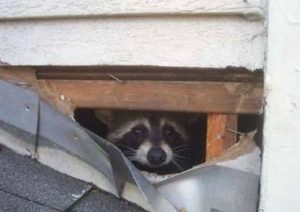 It’s a well-known fact that Minnesota has extremely cold winters, but temperate summers. For this reason, wildlife thrives in our state. Many of these wild animals find shelter and warmth during the bitter cold of the winter months. Unfortunately, this shelter is found in people’s homes and businesses. One of the most common critters to seek shelter inside is mice and other rodents. They’re diverse; the rodent family includes rats, mice, gophers, voles, beavers and more. When this happens, you need the expertise of wild animal handlers, like those at Minnesota Wild Animal Management.
It’s a well-known fact that Minnesota has extremely cold winters, but temperate summers. For this reason, wildlife thrives in our state. Many of these wild animals find shelter and warmth during the bitter cold of the winter months. Unfortunately, this shelter is found in people’s homes and businesses. One of the most common critters to seek shelter inside is mice and other rodents. They’re diverse; the rodent family includes rats, mice, gophers, voles, beavers and more. When this happens, you need the expertise of wild animal handlers, like those at Minnesota Wild Animal Management.
Although most wild animals go into a dormant phase during the winter months and survive outdoors, rodents are not capable of entering this dormant phase. They will stop at nothing to seek out warmth during the cold months. Homes and businesses provide well-insulated walls that are perfect for rodents to spend their winters.
Signs Of Rodent Infestation
Unfortunately, most people that have mice or other rodents living within their walls will never even know it. Mice are nocturnal, meaning they are only active at night – when people are asleep, and businesses are closed. If you encounter a mouse during the day, chances are that the infestation has reached a high number and could be very serious. The most common signs that you can see that are indicative of an infestation are the aftereffects: waste droppings around baseboards, kitchen cabinets, and in storage spaces. Other signs include noises within the walls (scratching, movement, or squeaking). Household pets, such as dogs and cats can also smell or sense critters within the walls and may indicate their presence by scratching or pawing at the wall’s surface.
Keeping Rodents Out Of Your Home Or Business
Rodents have been known to damage buildings, contaminate food and transmit diseases to people. To prevent any of this from happening to you, the best thing to do is take preventative measures ahead of time. We know… it sounds easy. Some measures you can take around your property include cleaning gutters (where rodents are known to build nests), store seed and food in metal containers (to prevent rodents from chewing through packaging), keeping landscape debris piles (leaves and branches) away from the property and foundation, and sealing off any holes in the foundation, along corners, and in the eaves and overhangs. Concentrate especially on popular spots of entry such as the area around pipes that are installed through walls.
Minnesota Wild Animal Management Is Ready To Help
If you would like help in identifying spots of entry and preparing, or if you find yourself dealing with an infestation, call the professionals at Minnesota Wild Animal Management for help. We are trained specialists in the humane removal of rodents, the identification of entry spots in preventing future entry, and repairing damages caused by the wildlife. Call us at (612) 386-1289. Emergency service available 24/7.




